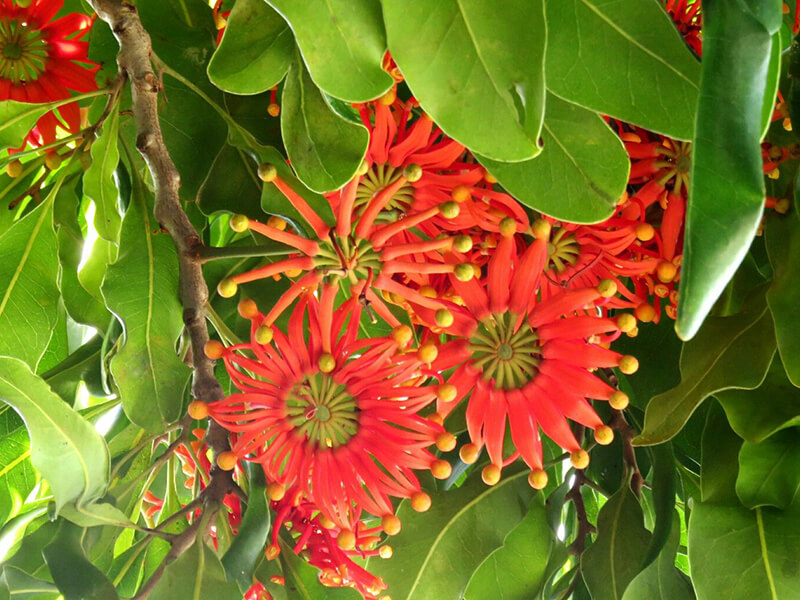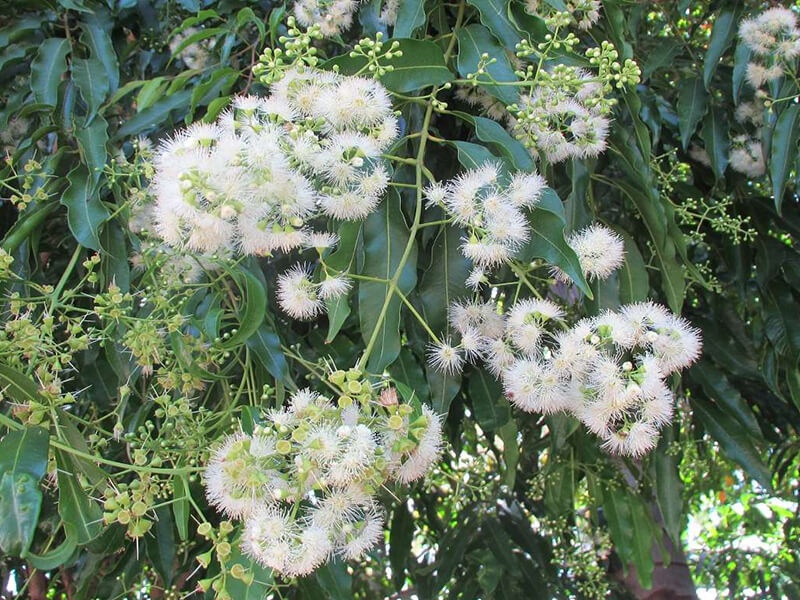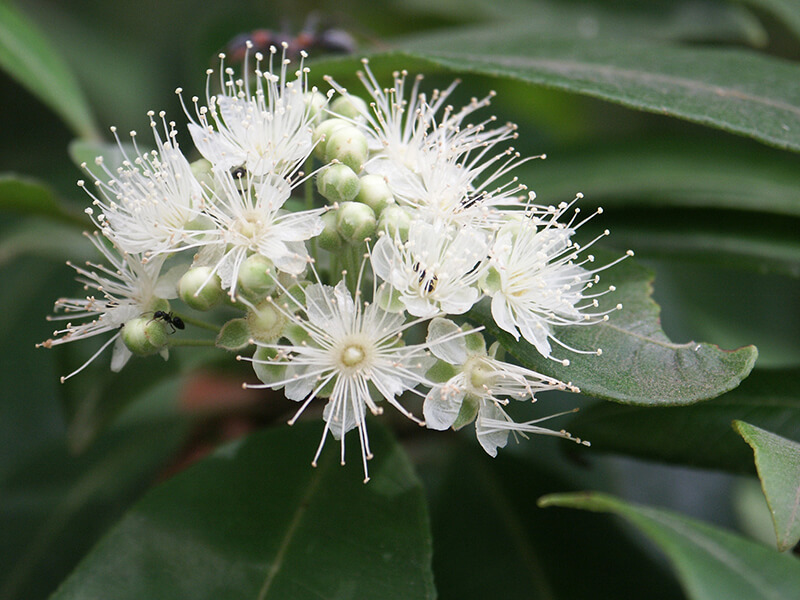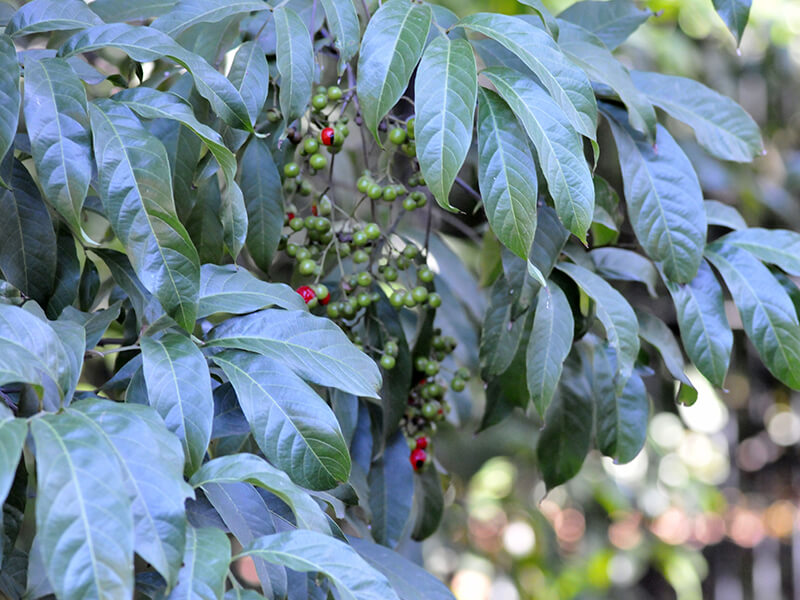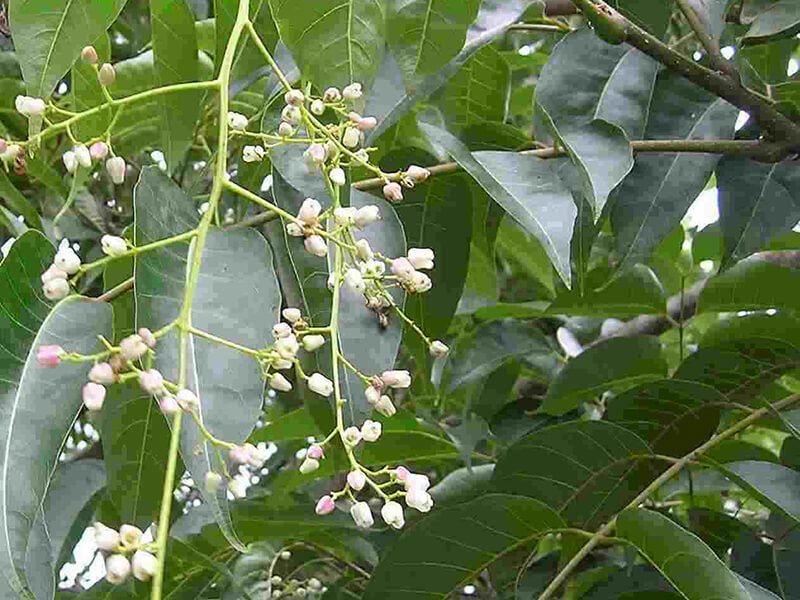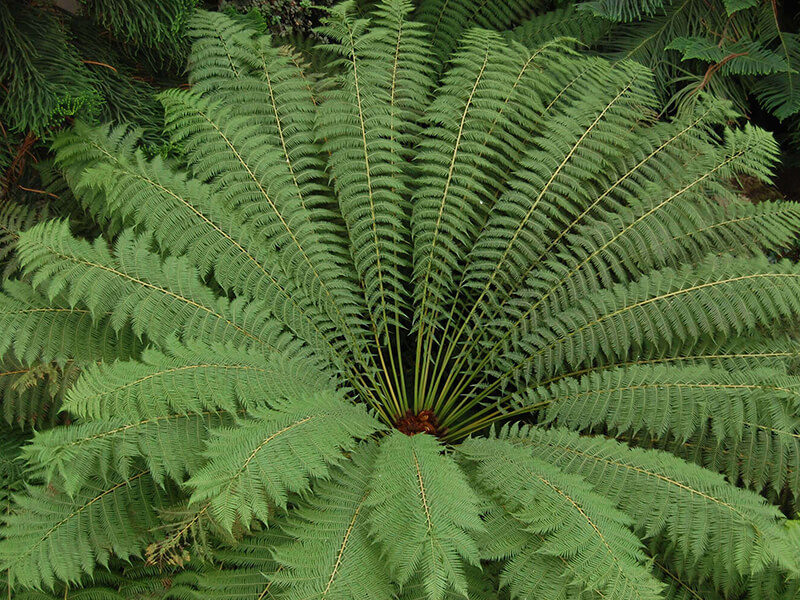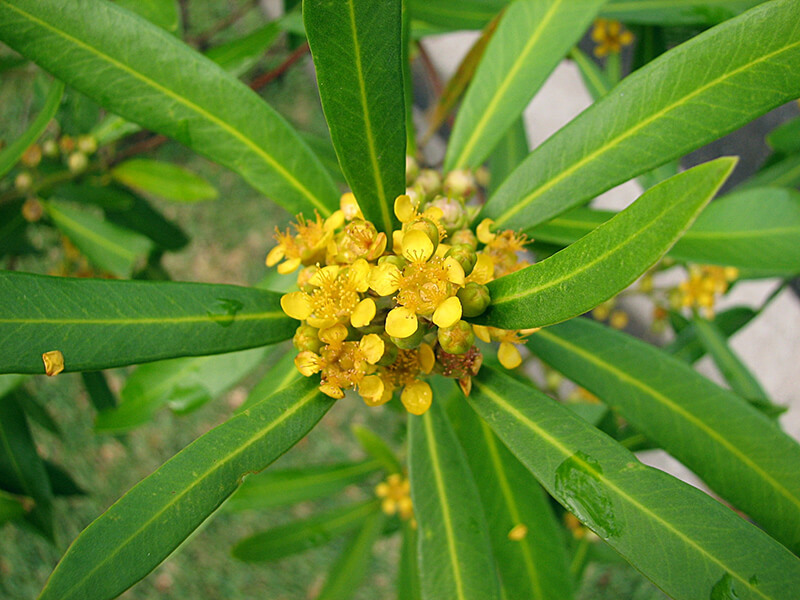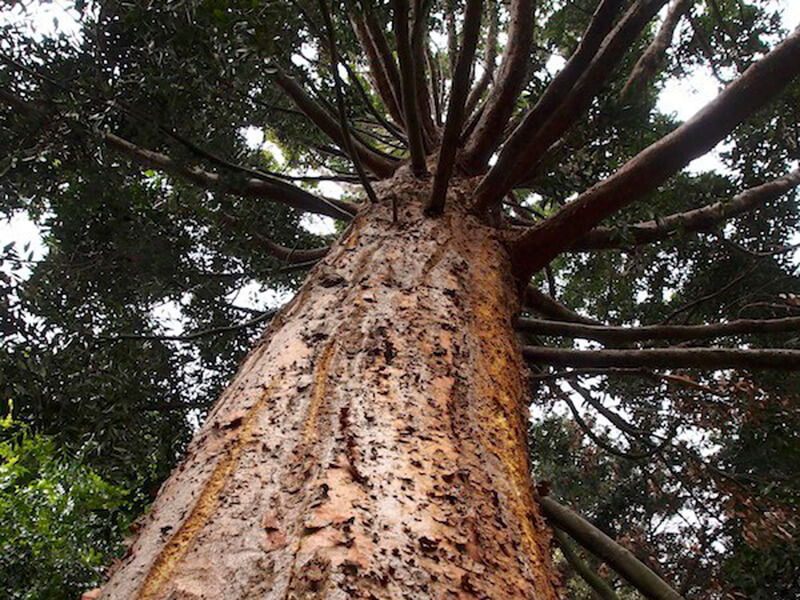The Albury Botanic Gardens were officially formed in 1877. They cover an area of 4 hectares (10 acres) and are situated on the Murray River alluvial flood plain with hills on the western side sheltering it from the cold air flow in winter and the hot dry winds in summer. These factors have allowed the establishment of a range of Australian rainforest trees and shrubs normally found in Queensland and northern New South Wales.
In the past 200 years there has been a reduction of the rainforest area in Australia due to land clearance for agriculture, heavy logging and bush fires. Rainforests are not adapted to fires and this encourages their replacement by schlerophyll forests, for example Eucalypt forests. (‘Sclerophyll’ - means having tough leathery leaves).
Rainforests extend from north-west Western Australia across the northern coast and down the east coast to Tasmania. They contain complex vegetation usually with a multi-storied tree layer, which can be so dense that the floor of the rainforest is dark even during midday. Specialised plants such as cycads, climbers and epiphytes, eg. ferns and orchids, can grow in these conditions (‘Epiphyte’ - means a plant growing on another plant or rock for physical support but not deriving food from it).
Annual rainfall, temperature, altitude and soil type determine the four subformations of rainforest in Australia
These are:
- Dry Rainforest 600-1100mm
- Subtropical 1300mm
- Warm Temperate 1300mm
- Cool Temperate 1750-3500mm
Many rainforest plants have attractive glossy green foliage with new leaves flushed with reddish tonings, interesting and colourful flowers, unusual fruits and buttressed tree trunks which make them attractive plants for landscaping.
This self-guided rainforest walk through the gardens is intended to introduce you to some of these. The walk starts north of the main gates and takes 40 minutes to complete at a leisurely pace.
- The first of our rainforest trees, the Bleeding Heart Tree (Omalanthus populifolius) has heart-shaped leaves which turn bright red as they grow older and dull purple fruits in summer. It is an adaptable tree which has a wide distribution from southern NSW to New Guinea and Indonesia and will grow up to 5 metres in sun or shade.
- To the north, in the next garden bed is a magnificent tall specimen of the Australian or Native Teak (Flindersia australis), which was named after Captain Matthew Flinders, one of Australia’s most famous early explorers. It is found in subtropical and dry rainforests in northern NSW and QLD, and can grow up to 40 metres. It’s durable yellow-brown timber is highly valued for general building, flooring and fencing. The fruit of the native teak are unusual woody pods that open to form an attractive star-shape that often hang on the tree for some months.
- The Weeping Lilly Pilly (Waterhousea floribunda), one of several Lilly Pillys, is a medium sized tree normally found bordering streams in subtropical rainforests in northern NSW and QLD. In gardens it has been grown for many years for its attractive shape, large clusters of white flowers and greenish fruits.
- Continue on and follow the path to the next junction and in the garden bed directly ahead of you, you will find the Native Quince or Smooth Rambutan (Alectryon subcinereus), a close relative to the Lychee. It has striking red and black seeds which ripen from April to October and it naturally occurs in various rainforests from Victoria to QLD.
- Next to the Native Quince is the Black Bean Tree (Castanospermum australe) with its shiny dense canopy of compound leaves. It is a subtropical rainforest tree from northern NSW and QLD, and produces bright sprays of yellowish red pea flowers in late spring to summer, followed by fat pods of up to 20cm long. The chestnut-like seeds were a reliable food source for the Aborigines, but only after extensive preparation to remove the toxin ‘saponin’ by grounding, soaking, leaching and roasting. It’s dark walnut and highly figured timber is valued for use in cabinet and furniture production.
- Go back to the junction, turn left and follow the path past the sundial towards the foot bridge. Turn left and continue along the path to find the Queensland Pittosporum (Pittosporum rhombifolium), also commonly known as Holly Wood and Diamond Leafed Pittosporum. It is a hardy small tree in cultivation but is naturally found in dry and subtropical rainforests in northern NSW and QLD. Its glossy diamond shaped leaves, clusters of white flowers in summer and orange fruits with black seeds in autumn and winter, make it an attractive landscaping plant.
- Further along, on your left you will find a Firewheel Tree (Stenocarpus sinuatus) with its distinctly lobed leaves and spectacular wheel-like clusters of red flowers in autumn. It is a medium sized tree naturally found in subtropical and warm temperate rainforests in northern NSW and QLD. In cultivation, protection from frosts and wind exposure are necessary when young and plenty of water is required in the summer.
- Enter the garden bed and on your right you will find the Illawarra Flame Tree (Brachychiton acerifolius) which has distinctive showy flame red flowers in summer and large green, maturing to black, boat-shaped fruits in autumn and winter. The Flame tree is an extremely adaptable tree and will grow rapidly if provided with ample water, well-drained soil, adequate nutrients and protection from frosts when young.
- Leave this garden bed and walk south across the lawn to find a Water Gum or Kanuka (Tristaniopsis laurina). Water Gums are found naturally growing along water courses in subtropical and warm temperate rainforests from eastern Victoria to QLD. It is a handsome tree that produces clusters of bright yellow flowers in the spring and in cultivation it copes well with the cold, medium frosts, wet soil, low fertility and full sun.
- Enter the Children’s Garden. On each side of the path you will find the Soft Tree Fern (Dicksonia antarctica) which is naturally found in the lower layers of cool-temperate, warm-temperate and cooler subtropical rainforests and some eucalypt forests from Tasmania to QLD. They are long lived, slow growing, withstand freezing conditions, regenerate after fire and are commonly found in the home garden.
- The Australian Red Cedar (Toona australis) is renowned for its red, soft, light, durable timber which is used for furniture, cabinet work and interior decoration. Formerly they were widespread in subtropical rainforests in NSW and QLD, however few are left in the wild today. This particular specimen has developed trunk buttressing which is characteristic of many rainforest trees. Before you move on, look up to see a rainforest epiphyte, the King Orchid (Dendrobium speciosum) attached to the Red Cedar.
- The Birds Nest Fern (Asplenium australasicum) is an epiphyte which naturally grows in a variety of sites throughout most rainforests in NSW and QLD.
- As you leave the Children’s Garden, directly to your right in the garden bed is the tallest tree in the gardens, a magnificent Queensland Kauri Pine (Agathis robusta). It is a very valuable timber tree and is found naturally in dense rainforests in QLD. Many experts say it is the finest specimen they have ever seen.
- Down the straight path, on the left you will find the Lemon-Scented Myrtle or Sweet Verbena Tree (Backhousia citriodora) which is also known as Lemon Ironwood as it has very hard timber. An essential oil, ‘citral’, provides a powerful lemon scent in the leaves and in summer it is covered in clusters of sweetly perfumed white flowers. It naturally occurs in subtropical rainforests in QLD.
- On the right is another Lilly Pilly, the Scrub or Brush Cherry (Syzygium australe). This tree produces red to pink pear-shaped fruits at various times throughout the year and is found in all types of rainforests in northern NSW and QLD.
- Turn left, to find the common or narrow-leafed Lilly Pilly, (Acmena smithii) in the garden bed on your right. This Lilly Pilly has pale pink to mauve fruit after clusters of white flowers in summer and is a popular small tree for the garden.
- Continue on and in the path on the left is the biggest of three Bunya Bunya Pines (Araucaria bidwillii) in the gardens. Bunyas are famous for their delicious nuts, borne in the large female cones at the top of the tree. They were gathered for feasts by the Aborigines every three years when the heaviest crops occured. They naturally occur in subtropical rainforests in QLD and since early settlement have been widely planted in southern parts of Australia because of their hardiness.
- In the garden directly ahead, is a male specimen of the Brown or Plum Pine (Podocarpus elatus). Bluish black plum like fruits are only produced by the female tree. The brown timber is a valuable softwood used for furniture and joinery. It is found in warmer rainforests in northern NSW and QLD.
- Continue along the path, keep left of the rockery and cross the lawn on the right toward the garden bed to find a Macadamia Nut Tree (Macadamia integrifolia) which produces narrow racemes of cream flowers in spring and round green fruits from January to April. This is one of the Macadamia species that is extensively cultivated for the edible kernel of the seed - the Macadamia “Nut” which technically is really a follicle. It is a small rainforest tree occuring naturally in drier types of rainforests in northern QLD.
